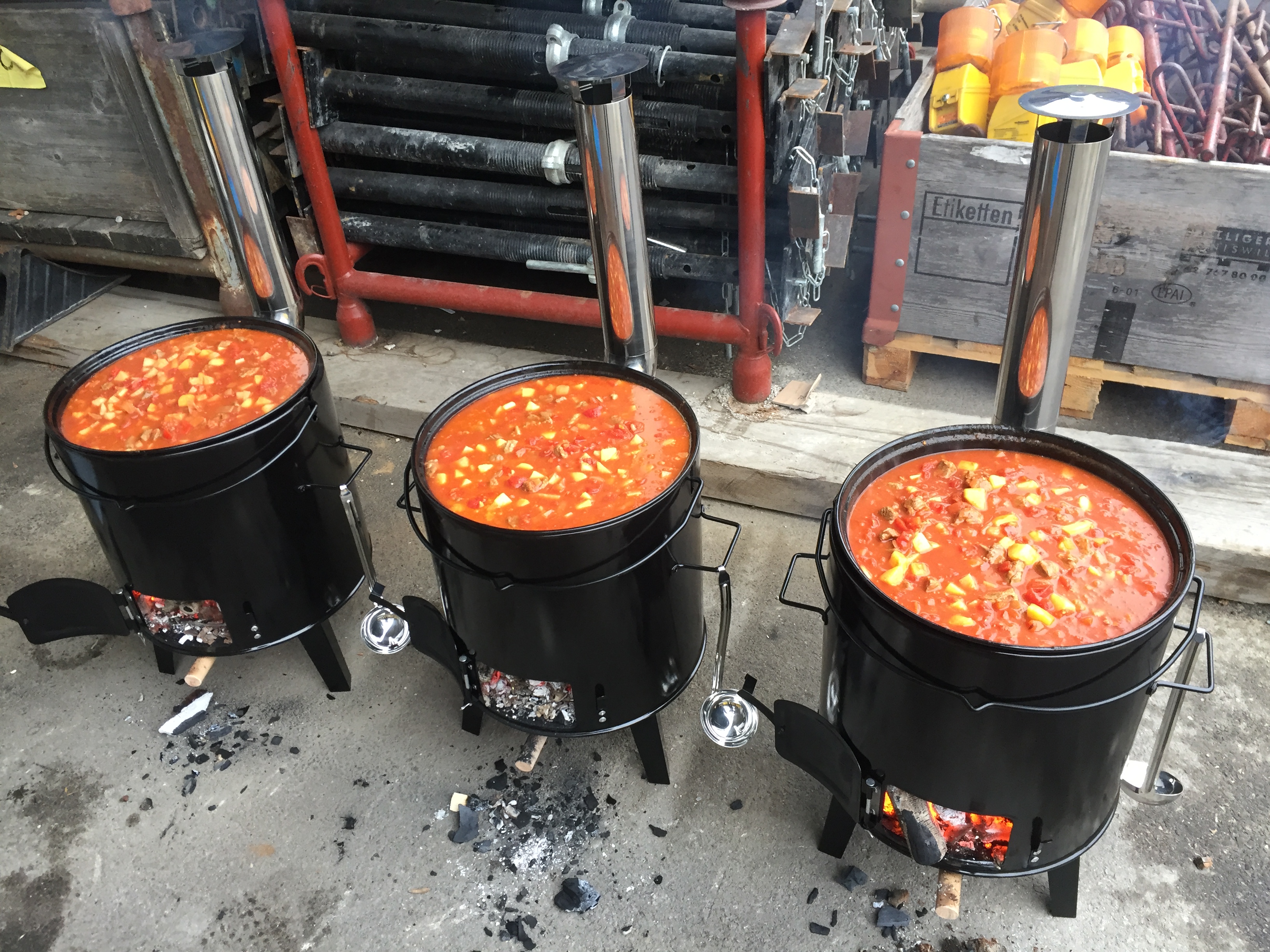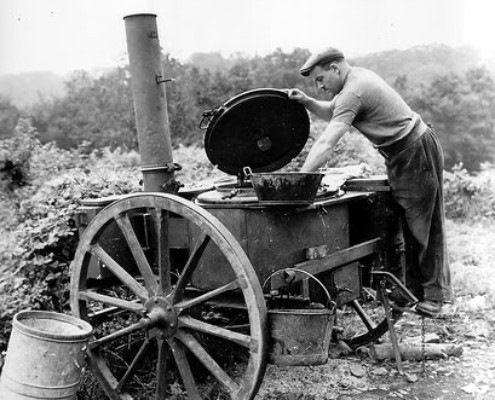The MREs during Desert Storm had a limited variety (still more than previous " selections"). My favorites were the chillimac and the spicy meatballs - they actually had some zip to them. Absolutely vile was the ham and egg omelet; sounded fine but you got a congealed mass that appeared to have already gone through another digestive system, not necessarily human. Apologies to anyone just getting up and looking forward to breakfast.
I know this will sound weird, but I was actually a fan of the ham and egg omelet. It wasn’t the tastiest and it had that plasticy MRE flavor that all MREs shared, but I thought it was decent on a cracker with the cheese spread. Sort of a shitty Egg McMuffin.
The next year after DS I was with the 1st Cav in NTC. We got cases of MRE heater packs before they started putting them in with the meals. It was like a miracle.
I found the difference in food while in the Navy to depend on where I was stationed. In boot camp and A school, the food was okay. If you didn’t like what was being served, you either ate it or went hungry. At NAS Whidbey Island, the food was good for the most part. There was 2 or 3 options at each meal. On the USS Sperry, a submarine tender, the mess deck fed the ships crew plus the crews of the subs in port. The sub mess decks were closed in port. The food was always good due to a higher budget per sailor. Everything was made from scratch including breads and pastries from the bake shop. Steak and lobster every other Wednesday. The 20 foot long charcoal grill was fired up 2 or 3 times a week, hamburgers, chicken, ribs, were available. I spent almost 4 months on mess duty and learned a lot.
I’ve also heard “MRE = Meals Refusing to Exit.” Apparently some MREs contain a lot of carbs & starch, leading to constipation…
How to cook for forty humans. It’s a cookbook!
When I toured the battleship USS Alabama, restored to WWII configuration, I wasn’t as impressed with the 16 in guns as I was with the galley. Cooking for 2500 on a ship is pretty impressive. The coffee was made in caldrons big enough to cook a missionary in. I guess the navy really runs on coffee.
Plus the ship had a soda fountain!
(Emphasis mine). Because of the preceding 3 sentences, I initially misread the last sentence as “I spent almost 4 months on mess duty and gained a lot.” ![]()
Hope it isn’t used by the Space Force. At least not in dusty environments.
If they can’t get these items made the way they were back then, they do use commercially-made products.
I’d just like to take this moment to recognize that the food of the US Air Force seems to generally receive high (heh heh) marks. One of my grandfathers was a pastry chef in the USAAF and then in the USAF.
He never cooked outside of his military career that I know of, and was generally a son of a bitch to deal with. But he did receive certificates and recognition for how good of a pastry chef he was. Hopefully his cooking allowed him to make someone genuinely happy. ![]()
Full disclosure: I prefer powdered eggs to real scrambled eggs.
I haven’t checked recently; are they still selling for the equivalent of a dollar an egg?
Back in the bad old days, it was ham and lima beans, better known to all as “ham and motherfuckers”. On field exercises, I always packed a few cans of chili in my gear, as C-rats, while edible, were uniformly tasteless and probably past their shelf life.
Green ham and eggs, no doubt. Would you eat them with a goat?
I have no idea, I’ve only been served them on airplanes and such.
While I recognize real egg could be fragile, is powdering the only alternative? Once you throw egg whites or whatever in a container and UHT them, is there a way of avoiding refrigeration? I think powdered egg a poor substitute, but it is not the only substitute.
Everyone in the military, for breakfast out in the field, has had green eggs.
Thanks for this. Our annual SOS breakfast is coming up, for the 1st Marine Division Association, Silicon Valley Chapter. The guest speakers are always interesting. In Oct 2016 it was General Mattis and it was nice to meet him.
It’s interesting that SOS dates to WWI. The earliest recipe and reference dates to 1910.
I miss the old C rats too. They were tasty, but the problem is that they added a lot of weight to your pack.
This thread reminded me of the Arctic MREs, or Cold Weather MREs. They came in a white pouch, instead of brown for the regular MREs. The Arctic MREs were huge: 2 MRE pouches taped together. They packed a gazillion calories, and the interesting thing is that you worked so hard trudging through the deep snow that you still lost weight on them.
And, why does this not surprise me? You can order MREs on Amazon.
I do have fond memories of my mandatory army time in the 90ies …
The days the Gulaschkanone was fired up, sure were universally liked …
it came with dozens of loaves of dark rye-bread…
man what a feast …
IIRC, worst days was friday, or as we knew it “Deja-vú-day” where you got a dish that contained all the leftovers that were not eaten during the week.
(Do my german colleagues know the expression of a “Grenadiermarsch”?) or is that a KuK austrian-thingy?
In cases anyone didn’t catch it, “ Gulaschkanone” is goulash cannon. The original item shows where the name came from
Named after Ceres, the Roman goddess of (among other things) grain crops.
Ceres: The Roman Goddess of Fertility and Agriculture - Symbol Sage
My mother used to periodically make something like this for dinner - in her case, it was a package of dried beef, cut up and sauteed with butter, then adding a can of cream of mushroom soup (and maybe a can of milk?), then serving it over toast. Despite my dislike of mushrooms, it wasn’t bad - and was extremely easy.
It wasn’t until years later that I heard of the SOS moniker.



